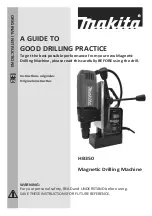
REBER srl - Via Valbrina, 11 - 42045 Luzzara(RE)
tel. +39 0522 976153 - fax. +39 0522 976096
– Reg. Imprese Trib.Reggio Emilia n.10.000 – P.Iva 00131370355
complete with Stone mm.
315x250
WARNINGS FOR THE CONNECTION TO THE GAS SUPPLY
Unless otherwise indicated on the appliance and on the head of this user manual, the appliance is designed and set for use with LPG cylinders using a
29 - 30 - 37 mbar pressure regulator and relative connection tube (whose length should not exceed 1.5 meters), not supplied with the appliance.
In the packaging of the device there are different nozzles and connection fittings in use in European countries.
The assembly of the connection fittings and the possible change of the nozzle must be carried out by qualified and competent technician who must
verify the absence of gas leaks, the absence of twisting or possible contact with the appliance of the connection pipe and the correct operation of the
appliance after installation.
The connection pipe to the gas cylinder MUST NOT be able to touch the appliance, take care to keep it at least at 15 cm. away from the external parts
of the appliance (Image 10), and must be replaced periodically according to national regulations.
Propane and butane cylinders:
Due to the power of the burner, use cylinders not less then 5KG. of capacity.
Use only specific pressure regulators and connection pipes for the third family of gas (butane and propane) certified and compliant with the standards
of the country where the appliance is used, periodically check its good functioning and the absence of gas leaks using the appropriate sprays on the
market.
Connect the pressure regulator to the cylinder, use the correct gasket and use a wrench to screw counterclockwise.
The gasket between the cylinder and the pressure regulator must be replaced at each cylinder change.
Only use connection pipes certified and in compliance with the standards of the country where the appliance is used, check the good condition at each
use and the absence of gas leaks using the appropriate sprays on the market.
Change the connection pipe on the expiration date indicated on it.
Change the connection pipe if any damage is seen.
The cylinder change must be carried out far from any possible flame ignition.
It is very important that the cylinder is positioned in such a way that the connection tube cannot twist itself during use and cannot touch any external
wall of the appliance.
The connection pipe must be fixed to the pressure regulator and to the appliance tap by means of safety clamps to avoid gas leaks.
CONNECTION TO THE METHANE NETWORK – If accepted by rules.
The connection to the methane network must be carried out by a qualified and competent technician able to guarantee a correct connection, safe and
free from gas leaks.
A specific tap to close the power supply must be positioned near the appliance in a position that is always easily accessible to the user.
For connection to the methane network, unless otherwise indicated on the appliance, replace the nozzle installed by the manufacturer with a nozzle
with a diameter of 1.40 mm provided: connection 1/8 gas.
Nozzle replacement and fitting installation must be carried out by a qualified and competent technician able to guarantee a correct connection, safe
and free from gas leaks.
To replace the nozzle, the following procedures must be followed:
Replacing the supply nozzle.
WARNINGS FOR THE USE OF GAS CYLINDERS
The use of gas cylinders over 10 kg is allowed if the appliance is used outdoors.
The gas cylinders must be handled with care to avoid damaging the pressure regulator.
The gas cylinders must be used, moved and transported always in a vertical position.
The gas cylinders must always be placed in an easily accessible place in order to quickly close the tap in case of need.
The gas cylinders must never be heated or exposed to direct heat to avoid an increase in internal pressure and bursting of the cylinder itself.
Do not store the gas cylinders in an incorrectly ventilated place.
LPG is a heavier gas than air and can easily saturate an environment in the event of gas leaks; a simple spark can cause it to explode.
IMPORTANCE OF THE MANUAL
The manual is an integral part of the machine. It contains important information on safety and the dangers highlighted with the symbols:









































